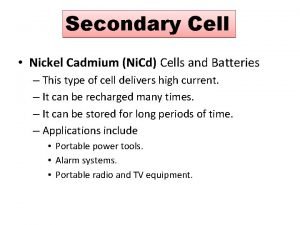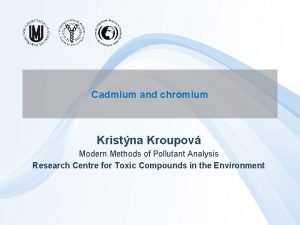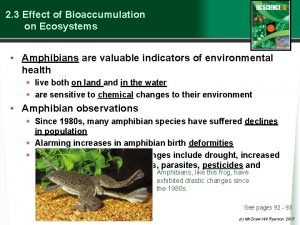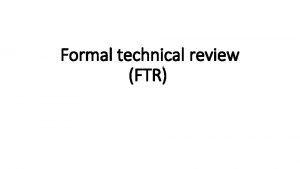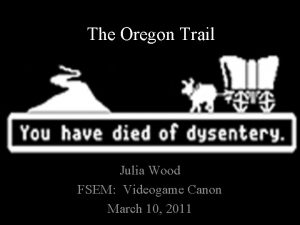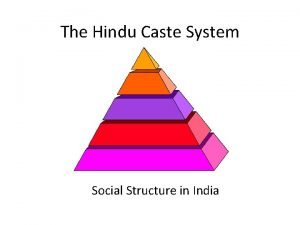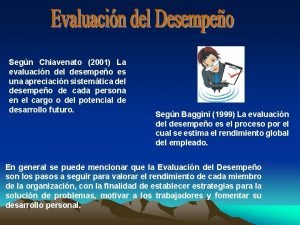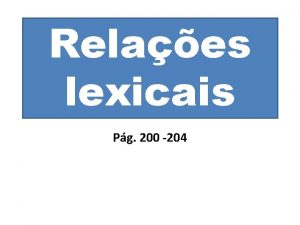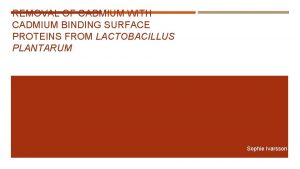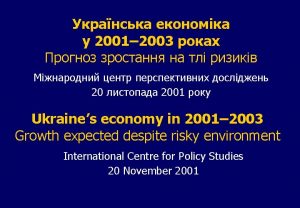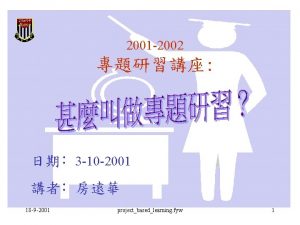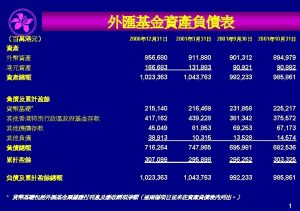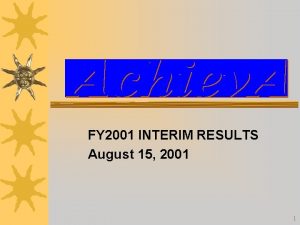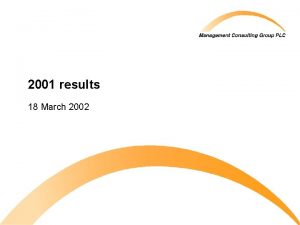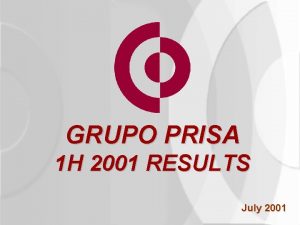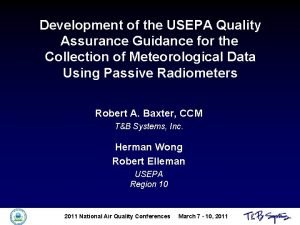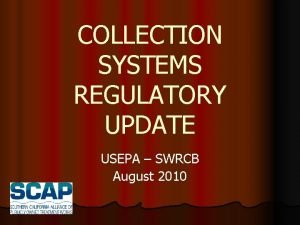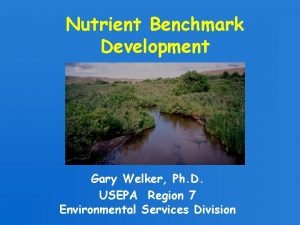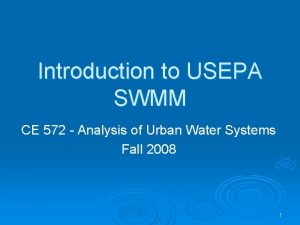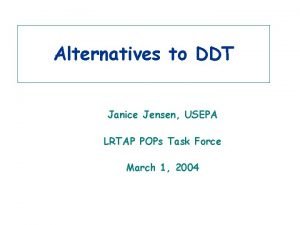Results of Technical Review of USEPA 2001 Cadmium



















- Slides: 19

Results of Technical Review of USEPA 2001 Cadmium Criteria Document Basic Standards Workgroup September 10, 2004 September 2004

Review Process 1. Technical review of 2001 Cadmium Updates 1. Based primarily on USEPA criteria development guidance • Stephan et al. 1985. Guidelines for Deriving Numerical National Water Quality Criteria for the Protection of Aquatic Organisms and Their Uses. 2. Literature search 1. Critically reviewed 2001 EPA database 2. Updated database 3. Recalculated criteria with updated databases 4. Developed “use-specific” criteria 1. coldwater 2. warmwater

Existing Cadmium Criteria (1995 Updates) Type Equation Criteria (hard=100 mg/L) acute e 1. 128(ln hardness)-3. 6867 4. 52 g/L chronic e 0. 7852(ln hardness)-2. 715 2. 46 g/L

2001 Cadmium Criteria Type Equation Criteria (hard=100 mg/L) acute e 1. 0166(ln hardness)-3. 654 (from calculated FAV) 2. 79 g/L acute* e 1. 0166(ln hardness)-3. 924 (from rainbow trout SMAV) 2. 13 g/L chronic e 0. 7409(ln hardness)-4. 719 0. 27 g/L

Literature Review • Reviewed literature from 2001 Cadmium Update for: – quality of scientific methodology – relevant toxicological data • Determined 4 papers in document unsuitable – – Poor dose response (control higher concentration than LC 50) Pre-exposed organisms Species not native to North America Unsubstantiated effects levels • Reviewed cadmium papers since 2001 Criteria Document and earlier papers not included in the document – ~130 relevant papers reviewed – Acute cadmium criteria • 14 data points from 5 sources added* – Chronic cadmium criteria • 12 data points from 6 sources added* • includes data from studies conducted by Chadwick & Associates and unpublished data from CDOW

Resultant Acute Database • 2001 EPA acute cadmium database – 55 genera – 4 most sensitive genera • • Salmo (brown trout) Salvelinus (bull and brook trout) Morone (striped bass) Oncorhynchus (trout and salmon) • CEC revised acute cadmium database – 56 genera – 4 most sensitive genera = Salvelinus, Salmo, Morone, and Oncorhynchus – i. e. , same genera, slightly different order

Resultant Chronic Database • CEC revised and 2001 EPA chronic cadmium database – 16 genera (deletions and additions balanced out) – 4 most sensitive genera • • Hyalella (amphipod) Daphnia (cladoceran) Oncorhynchus (salmon and rainbow trout) Chironomus (midge)

Acute Hardness Slope • 2001 EPA acute hardness slope = 1. 0166 – 12 species – Used only adult data for Pimephales promelas (fathead minnow) • despite using only juveniles and fry for toxicity data • CEC revised acute hardness slope = 0. 9059 – 13 species (added Oncorhynchus mykiss) – Used juvenile and fry (not adult) data for P. promelas

Chronic Hardness Slope • 2001 EPA chronic hardness slope = 0. 7409 – 3 species – Used only Chapman et al. manuscript data for D. magna • CEC revised chronic hardness slope = 0. 7635 – 3 species (added O. mykiss and deleted D. magna) – Used the revised data for S. trutta • In both cases – slopes based on limited data for only a few species and highly variable

Acute-Chronic Ratio (ACR) • No ACR reported in 2001 Cadmium Update – EPA believed available data did not meet requirements – Felt chronic database large enough to calculate criterion directly • Chronic database still limited (only 16 genera) – “Just meets” the 8 family rule – “sample size effect” significant to criterion calculations • CEC calculated ACR = 2. 7632 – Adding new species revealed a positive relationship between SMAVs and SMACRs (i. e. , use of ACRs now possible) – Calculated as the geometric mean of the 3 lowest SMACRs

CEC Revised Cadmium Criteria Type Equation Criteria (hard=100 mg/L) 2001 Criteria (hard=100 mg/L) Acute e 0. 9059(ln hardness)-3. 1871 2. 68 g/L 2. 79 g/L 1. 79 g/L 2. 13 g/L (From calculated FAV) Acute* e 0. 9059(ln hardness)-3. 5898 (From lowest GMAV) Chronic e 0. 7635(ln hardness)-4. 2062 0. 50 g/L 0. 27 g/L Chronic** e 0. 7635(ln hardness)-2. 9434 1. 77 g/L N/A Chronic** e 0. 7635(ln hardness)-3. 3462 1. 19 g/L N/A (from lowest GMAV) *using GMAV for Salvelinus; ** calculated with the acute-chronic ratio

Use-Specific Criteria • Expanding “site-specific” concept to broader application as “use-specific” • Simplest approach – “cold” and “warm” • Species in acute and chronic databases were identified as coldwater, warmwater or both – Eliminates species from one or the other database that would not be expected given the “use”

Warmwater Acute Criteria • 52 genera • More than eight families present • 4 most sensitive – – Morone (striped bass) Hyalella (amphipod) Ptychocheilus (squawfish) Simocephalus (cladoceran) • @ hardness = 100 mg/L =13. 809 g/L or =2. 980* g/L *adjusted with lowest GMAV

Warmwater Chronic Criteria • 13 genera • More than eight families present, but key family absent • Chronic calculated using ACR and warmwater acute • @ hardness = 100 mg/L = 9. 055 g/L (calculated w/ ACR) or = 1. 954* g/L (calculated w/ lowered FAV and ACR) *adjusted with lowest GMAV

Coldwater Acute Criterion • 42 genera • More than eight families present • 4 most sensitive = – – Salvelinus (trout) Salmo (trout) Oncorhynchus (salmon) Thymallus (artic grayling) • @ hardness = 100 mg/L = 2. 529 g/L or = 1. 790* g/L *adjusted with lowest GMAV

Coldwater Chronic Criterion • 10 genera • Database does not include eight families • Must calculate with ACR • @ hardness = 100 mg/L =1. 658 g/L (calculated w/ ACR) or =1. 174* g/L(calculated w/ lowered FAV and ACR) * adjusted with lowest GMAV

Criteria Summary (all values @ hardness = 100 mg/L) Acute ( g/L ) Chronic ( g/L ) 2001 EPA Update 2. 13 2001 EPA Update 0. 27 CEC all data 2. 68 CEC all data 0. 50 CEC all data (ACR) 1. 77 CEC all data (lowest GMAV) 1. 79 CEC all data (ACR and lowest GMAV) 1. 19 CEC warmwater 13. 81 CEC warmwater (ACR) 9. 06 CEC warmwater (lowest GMAV) 2. 98 CEC warmwater (ACR and lowest GMAV) 1. 95 CEC coldwater 2. 53 CEC coldwater (ACR) 1. 66 CEC coldwater (lowest GMAV) 1. 79 CEC coldwater (ACR and lowest GMAV) 1. 17

But, there are data limitations • Revised databases and calculation of criteria equations were derived from best available data • Still, data are often variable and dated • Some data needs include: – Acute data for key fish groups • GMAV of most sensitive species calculated from undefined values (brook trout) and data obtained from undesirable methodology – Chronic data on key species • For example, existing data on Daphnia varies 10 fold • Limited chronic database affect criteria – need more chronic toxicity testing with more species

But, there are data limitations • Data needs - continued: – Hardness – slope data • Slopes now based largely on relatively few data from D. magna and P. promelas • Need more testing on more species over wide range of hardness – Paired acute and chronic testing for FACR • Revised FACR calculated from three fish species • Invertebrate data would be useful
 The ni-cd cell delivers a potential difference of
The ni-cd cell delivers a potential difference of Source of cadmium
Source of cadmium Petra lovka
Petra lovka Source of cadmium
Source of cadmium Weston cadmium cell construction and working
Weston cadmium cell construction and working Ftr quality assurance
Ftr quality assurance My tech zone sae
My tech zone sae Chapter review motion part a vocabulary review answer key
Chapter review motion part a vocabulary review answer key Ap gov final review
Ap gov final review Nader amin-salehi
Nader amin-salehi Systematic review definition
Systematic review definition Narrative review vs systematic review
Narrative review vs systematic review 2001: a space odyssey the sentinel
2001: a space odyssey the sentinel Oregon trail 2001
Oregon trail 2001 India caste system today
India caste system today Merzenich et al (1984) ib psychology
Merzenich et al (1984) ib psychology Stuff that happened in 2001
Stuff that happened in 2001 Chiavenato 2001
Chiavenato 2001 Só doi quando eu respiro. porto alegre l&pm 2001
Só doi quando eu respiro. porto alegre l&pm 2001 2001-1954
2001-1954
